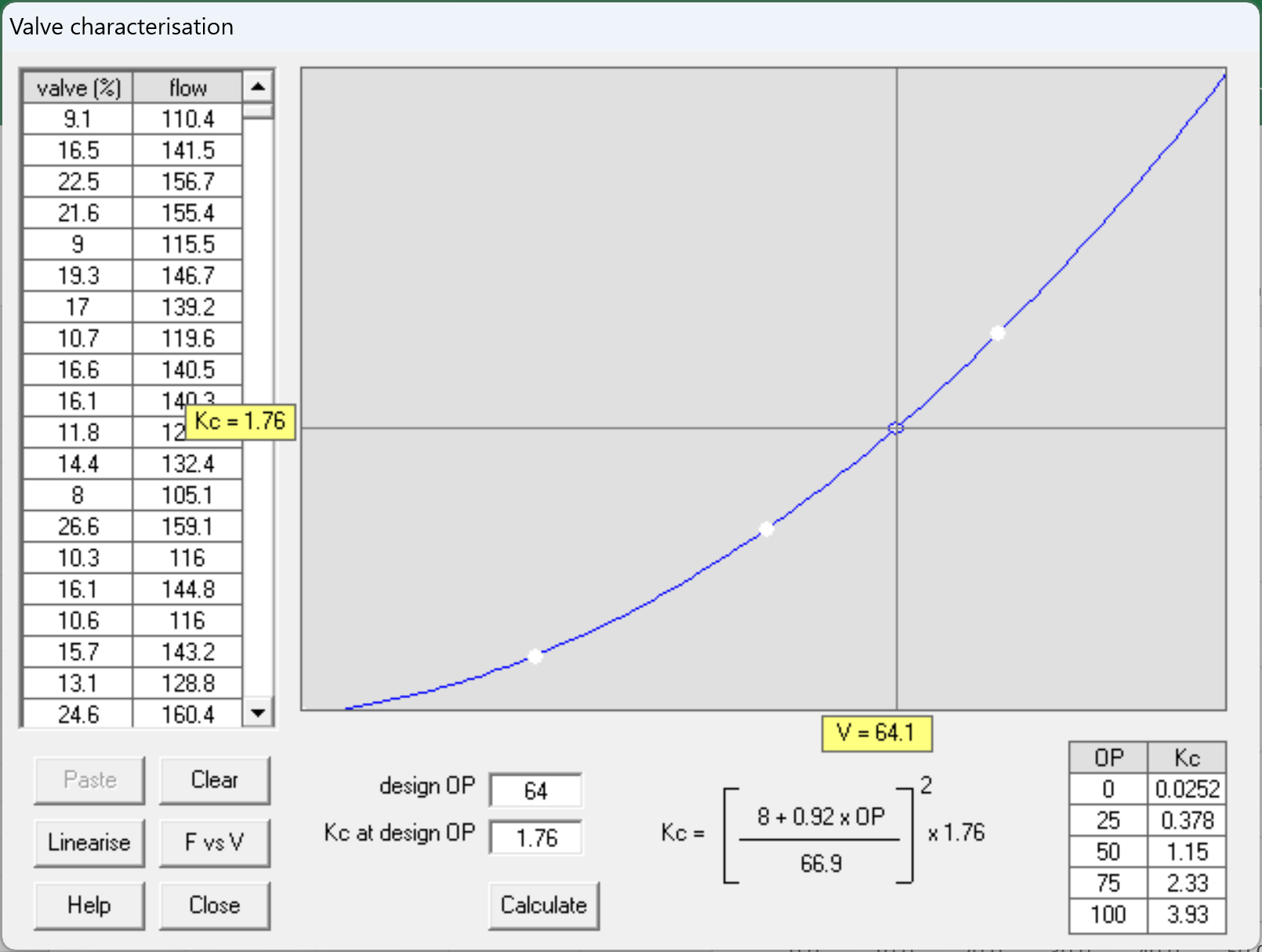
The relationship between flow and control valve opening can be very non-linear. Controller gain has to be set so that the controller is stable in the region where the flow is most sensitive to valve position changes, with the result that it is slow to respond over the remainder of the operating range. Modern control systems support a variety of linearisation techniques. This tool enables the engineer to select and design the most appropriate.
Data collected from the process historian are pasted in. The software first displays these data and identifies whether the degree of non-linearity justifies correction. For example, a non-linear valve can be treated as linear if norrmally operating over a narrow range. The variation is process gain is displayed. If linearisation is required then the tool will generate both a continuous linearisation function and a tabular method.
Rather than linearisation, it may be preferable to apply gain scheduling. The software presents both an equation-based method and a look-up table.
As part of its analysis
the tool deternines the expected maximum flow, with the control valve fully
open. This parameter is required to calculate the tuning constants for level
controllers that directly manipulate a control valve.

